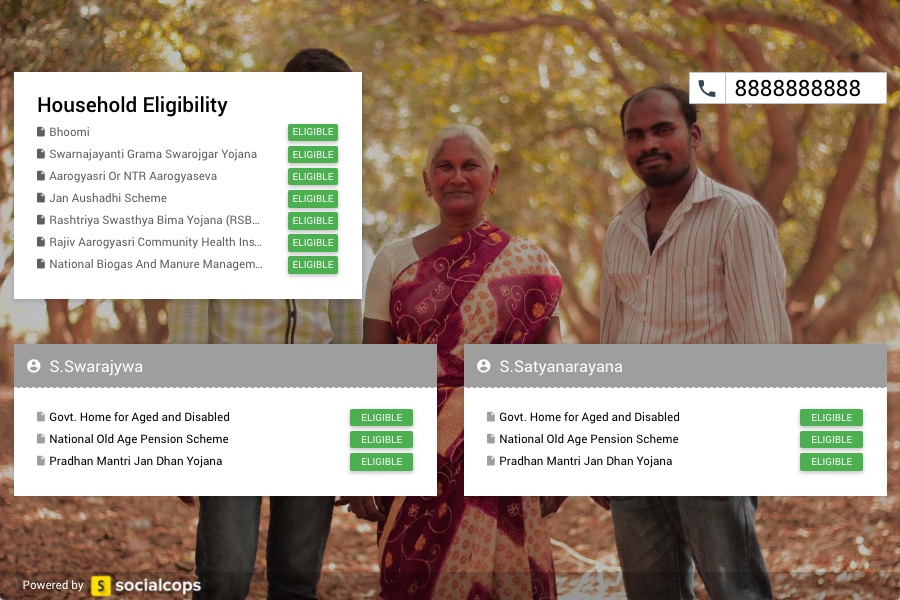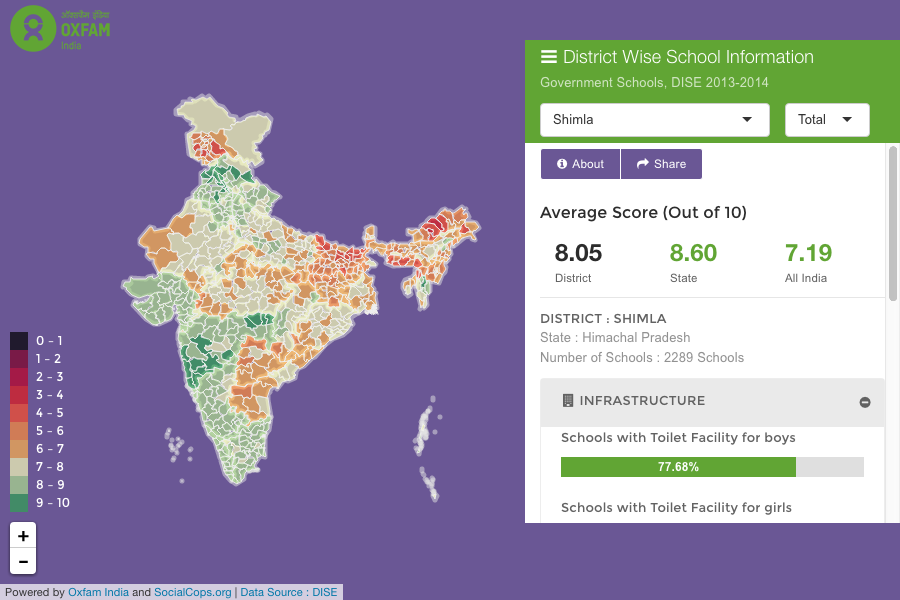Government officials could compare 80 demographic, economic, health, and infrastructure data for each block.
Mapping made it easy to find hidden patterns, trends and insights that can be leveraged for better development plans.
Village development plans — with the priority and cost of each intervention — helped decision makers plan budgets effectively.
All the data — healthcare, education, infrastructure, and more — that officials needed was available through interactive charts.
Learn how Maharashtra automated planning for 290 villages
→
Select indicators make it easy to understand the performance of each scheme and find achievements or issues.
Geographic drill-downs show how each area ranks or compare regions across different indicators.
With a variety of color-coded maps and charts, understanding the reasons behind a scheme's success or failure is a breeze.
Learn about India's national data platform, used by all elected officials and ministers
→
If we plan and implement a scheme based on mere guesswork and estimates, then certain gaps will show in our decision-making. With the use of numbers, data and technology, we can make important decisions in a matter of minutes. Data is going to become a primary medium for governance in India.
Cabinet Minister for Petroleum & Natural Gas
Government of India
By matching eligibility data for each scheme with each person's data, we determined when someone was not using schemes for which they were eligible. Local administrators used this dashboard to make sure every person received all of their scheme benefits.
Learn how Andhra Pradesh transformed 264 villages with 100 million data points
→
View Department Action Plans for each ministry, or multiple plans grouped by theme.
Each Department's Action Plans can be viewed in a single page, to assess progress at a glance.
Department officials can view their joint progress toward quantitative targets.
As Department Action Plans change, officials can add new metrics or action points to all levels of a dashboard.
Learn how the Government of India tracked its plans across 89 ministries
→
I don't need to hold review meetings. I know on a real-time basis which people are doing well, and I can connect to them on a one-to-one basis immediately using technology. Earlier we used to work without these tools, and now virtually I can run my office with my mobile phone and my iPad.
Joint Secretary
Government of India
Promote transparency and communicate your work through beautiful graphs and charts. Use static visualizations for reports or interactive ones to engage with the public.
→